An Dinh Palace in Hue Vietnam: Things You Need to Know
An Dinh Palace in Hue was constructed in the area of over 23.460m2. This is one of the best constructions in the palace system of Nguyen dynasty. In here, Emperor Khai Dinh (1916-1925) had the palace constructed on the basis of a small residence where he used to stay. The Emperor had passed away before An Dinh palace was completed. Then, An Dinh Palace became the place where royal families received foreign delegations. Madam Tu Cung stayed in the palace in 1945-1950-1968-1975.
- Location: 179 Phan Dinh Phung, Phu Thuan Ward, Hue City
- Opening Hours: Daily from 7.30AM - 5.30PM; Mon to Sun
- Entrance Fee: 50k/ ticket / Adult; Free for Children
- Dress Code: Not Required
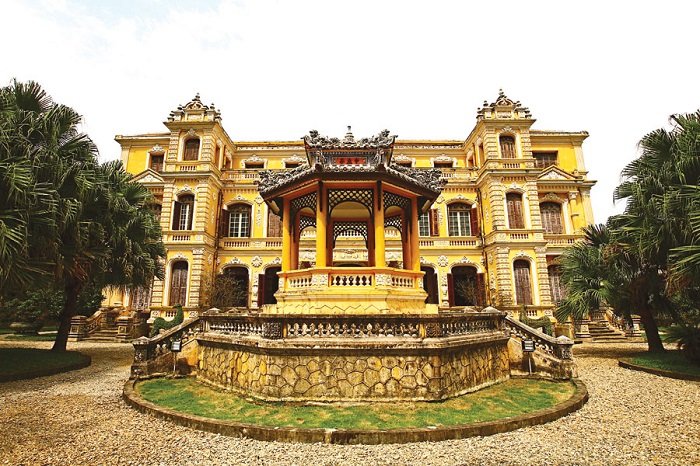
History of An Dinh Palace in Hue:
Originally at this position from the 14th year of Thanh Thai (1902), Phung Hoa Cong Nguyen Phuc Buu Dao (later King Khai Dinh) established his own palace, named An Dinh. After ascending the throne in 1917, Khai Dinh used his own money to renovate it according to modern architecture. In early 1919, the construction work was completed, the palace still kept its name.
From February 28, 1922, An Dinh Palace became the potential for Dong Cung Crown Prince Vinh Thuy (later King Bao Dai). After the August Revolution in 1945, the family of former emperor Bao Dai moved from the Royal Palace to live at An Dinh Palace. After 1954, Ngo Dinh Diem's government confiscated An Dinh palace.

After 1975, Ms. Tu Cung donated An Dinh Palace to the revolutionary government. An Dinh Palace was used as a dormitory for the families of Hue University professors and was severely degraded until 2001 before being restored and restored.
Up to now, six frescoes at Khai Tuong Lau with the help of Germany have been restored according to the method of restoration and use of preservatives to prevent the harmful effects of the environment, returning the original appearance. its in the inner palace relic An Dinh palace. After the Long An Palace (where the Hue Museum of Royal Fine Arts is located) closed to carry out the restoration project, all the museum's artifacts were brought to An Dinh Palace for display.
Architecture of An Dinh Palace:
The palace has 3 floors, with a total area of 23,463m2, surrounded by a brick wall, 0.5m thick, 1.8m high, with iron bars on top. When intact, there are about 10 buildings. From front to back are: Marina, Main Gate, Trung Lap Communal House, Khai Tuong Floor, Cuu Tu Dai Theater, Animal Stables, Lake...
Through time and the destruction of war, until now the palace is only remaining quite intact 3 buildings: the main gate, Trung Lap communal house and Khai Tuong floor.
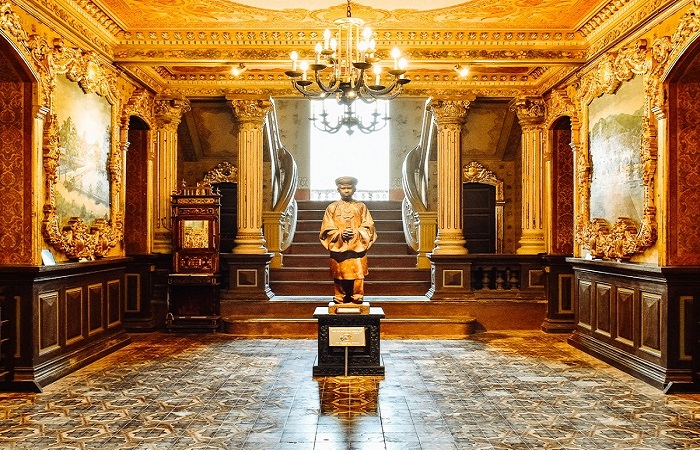
The main gate follows the three-way entrance, two floors, decorated with elaborately embossed porcelain. Trung Lap communal house, located inside the door, has an octagonal communal house structure with a high background. In the communal house, there is a bronze statue of King Khai Dinh, the scale of a real person, cast in 1920.
At the palace, the traditional architecture of Nguyen dynasty still remains. Gothic architecture is also clearly shown through decoration styles and items such as pillars, archway, etc.
Like other works constructed at the time, westernized construction materials were used in An Dinh palace. Entering the palace, visitors may feel like being lost in the house of a European noble family. Rooms, stairs and decorative patterns are away from traditional style. Grape leaves were used instead of dragon and phoenix patterns. Daisy and lotus patterns were replaced by rose ones.
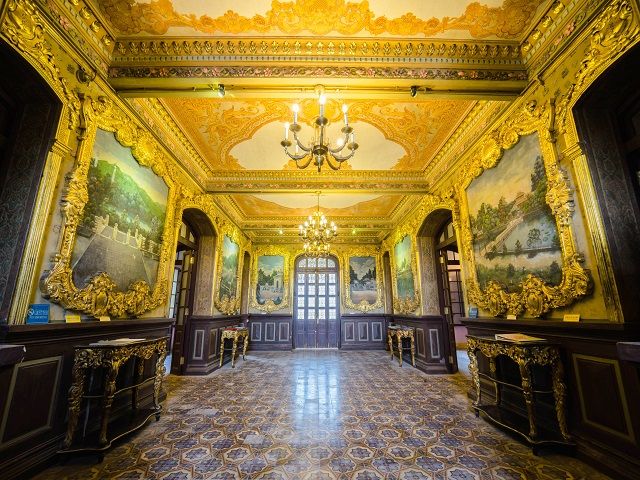
There are totally 20 rooms inside the palace. What special are the living room and two reception rooms at the first floor. The 6 drawings which describe the tombs of Emperors, namely Gia Long, Minh Mang, Thieu Tri, Tu Duc, Khai Dinh and Dong Khanh are hung on the living room. Powder color drawings, surrounding glided frames, 26 archways of the living room were made from glided wood and meticulously decorated.
Perhaps, An Dinh palace is home to glided masterpieces. These drawings and glided patterns bring a cozy feeling and make visitors forget its western architecture. The second and third floor were the places where Madam Tu Cung stayed and worshiped gods.
Cuu Tu Dai house is a famous architecture which was home to ceramic interior decoration - a popular decoration style under Emperor Khai Dinh reign. For this reason, Emperor Khai Dinh was called "The son of pieces of ceramics" by French.
Deer and crocodiles were breed in the garden behind the main house. Today, An Dinh palace poem written by Emperor Khai Dinh in Autumn 1920 still can be found on the screen placed on the second floor.
See Also:
- Nguyen Dynasty: The last Royal Family in Vietnam with 13 Kings
- Discover Hue Royal Tombs of the Nguyen Emperors in Hue City
- Learn about Life of Vietnamese Eunuchs in the Nguyen Dynasty
- List of Best Things to Do & See in Hue Imperial Capital Vietnam
- The List of Best Local Street Food in Hue You Should Never Miss

![]()
![]()
![]()
![]()
![]()
Best of Vietnam

Best Vietnamese Food You Have to Try in Vietnam
Best Food in Vietnam: Vietnamese Traditional Food is top World well known to be both healthy and...
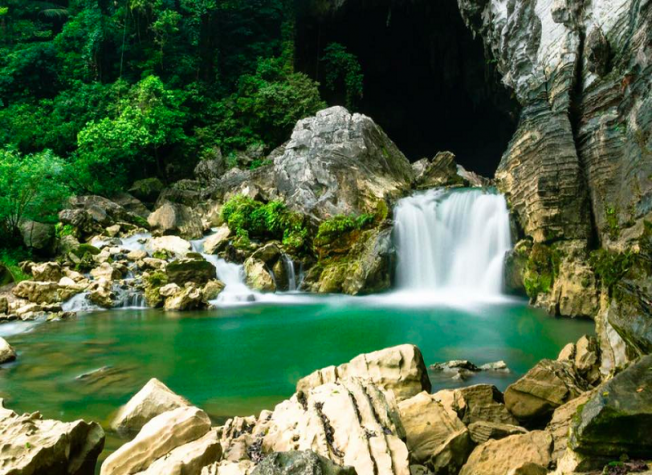
10 Best National Parks in Vietnam
Vietnam Travel Guide: If you look for the Best Wildlife Discovery Experience in Vietnam, here are...
Read More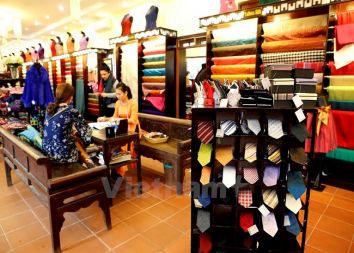
Best Souvenir to Buy in Vietnam
If you look for Best Things to Buy when traveling to Vietnam to bring home for your family & friends...
Read More
The 10 Best Places to Visit in Vietnam
Vietnam Travel Guide: Home to an extensive collection of historical and cultural attractions,...
Read More
Top 10 Museums You Should Not Miss in Vietnam
Vietnam, 4.000 years old country has a unique and lengthy history, culture with 54 ethnic groups. It...
Read MoreFind your trip
Vietnam Best Tours
Vietnam Car Rental
Vietnam Travel Blog
- Vietnamese People: Origin, History, Culture and Traditions
- Vietnam Currency: Best ATM and Places to Exchange Money
- Vietnam Map: Regions, Cities & Provinces Map of Vietnam
- What is illegal Things in Vietnam: Rules & Laws for Tourists
- Best Time to Travel to Vietnam to Avoid the Bad Weather
- Vietnam News: Population & Religions of 54 Ethnic Groups









